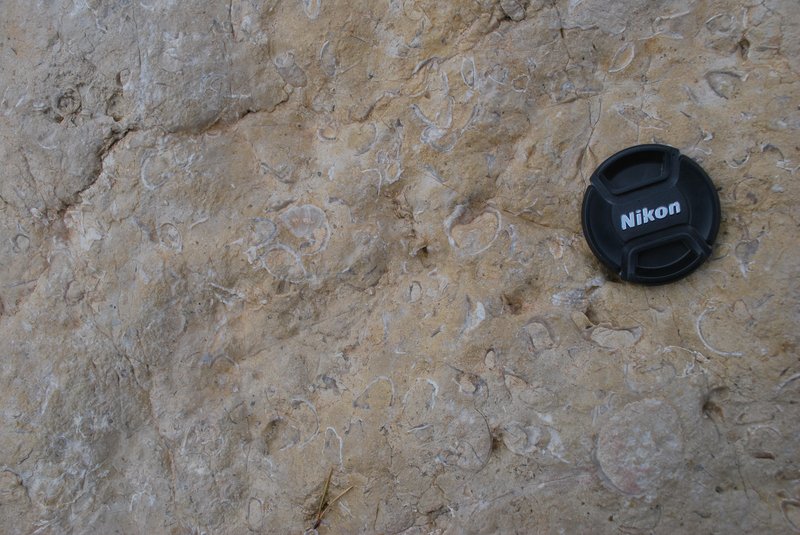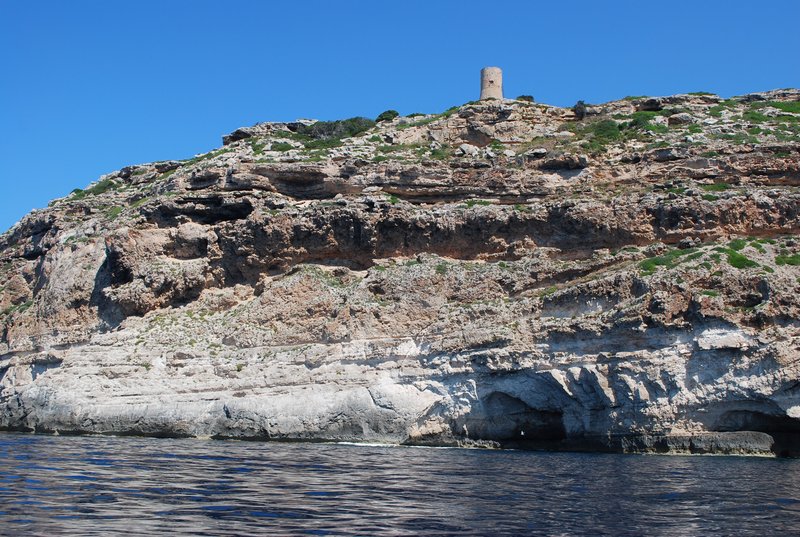Changes in the Earth’s atmosphere
The Earth’s climate has fluctuated through geological time in response to plate tectonic movements and volcanism, resulting in fluctuations in global sea level. During periods of continental break-up, rifting of plates results in extensive volcanism, resulting in high atmospheric CO2. As a result, temperatures have risen, ice sheets melted and the continents have become flooded as sea level rose. During these time periods, large carbonate platforms formed across the globe, even at high latitudes. During cooler periods, such as today, seawater is locked up in polar ice caps and sea level falls. This results in larger continental areas and a more rapid decrease in temperature from the equator to the poles. As a result, carbonate platform growth is usually restricted to specific locations close to the equator.

Platy corals, Turks and Caicos Islands, Britsh West Indies
Changes in seawater chemistry
Throughout geological time, the composition of the Earth's oceans has fluctuated in response to changes in atmospheric CO2, volcanism and run-off from continents. During greenhouse periods, when CO2 concentrations are high in the Earth's atmosphere, seawater has lower concentrations of magnesium than during icehouse periods. So-called 'low magnesium calcite', precipitated during greenhouse periods is more chemically stable than high magnesium calcite and aragonite, precipitated in icehouse periods, such as today. This can have a profound effect on how the limestone reacts with water as it is buried, potentially resulting in changes to its mineralogy and volume.
Evolutionary changes in carbonate sedimentary rocks
Since carbonate rocks are composed of organisms and calcium carbonate that is precipitated from seawater, they are capable of preserving an archive of global environmental change. For example, in the Precambrian and early Cambrian, limestones were formed principally from microbes, and record the emergence of the earliest complex lifeforms. During the Devonian and Carboniferous, reefs started to develop, made of organisms such as sponges and corals. The largest extinction event in Earth history occurred at the end of the Permian, and was followed by very warm global temperatures that remained for over 180 million years. It was during this period that dinosaurs and other large, complex organisms developed on land and in the sea. In the Cretaceous, corals were much less common than previously, and many carbonate platforms were dominated by benthic organisms such as foraminifera and large, specialised bivalves, called rudists.

Rudist bivalves in Lower Cretaceous sediments, southern France
Following another mass extinction event at the end of the Cretaceous, a more modern configuration of the continents and seawater chemistry was established, such that Miocene-aged carbonate platforms (~5 to 20 million years old) very much resemble those we see in our oceans today.

Miocene reef, Cap Blanc Mallorca, which resembles the composition and architecture of modern carbonate platforms